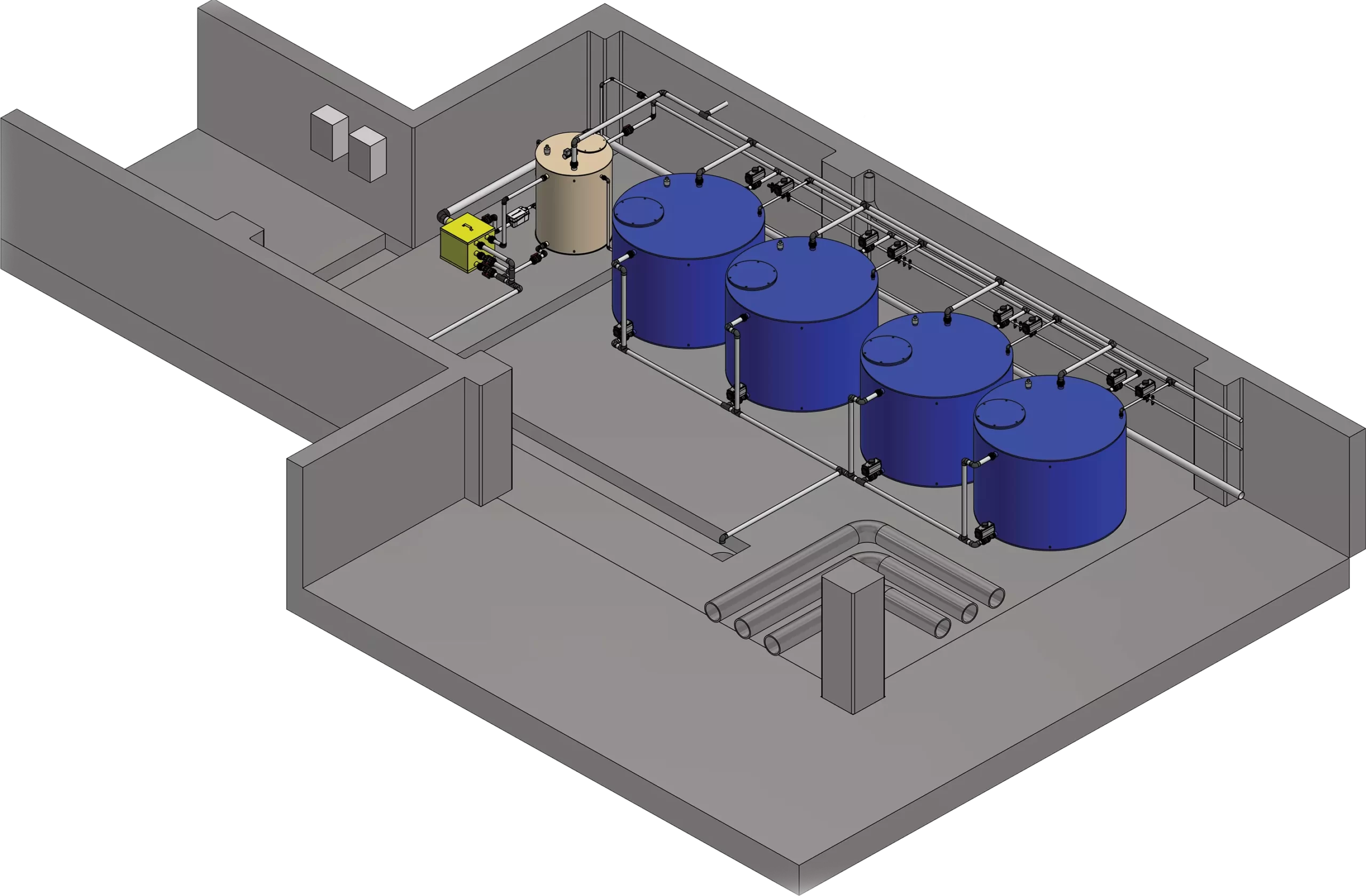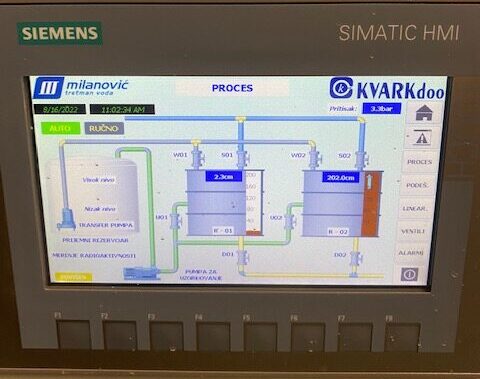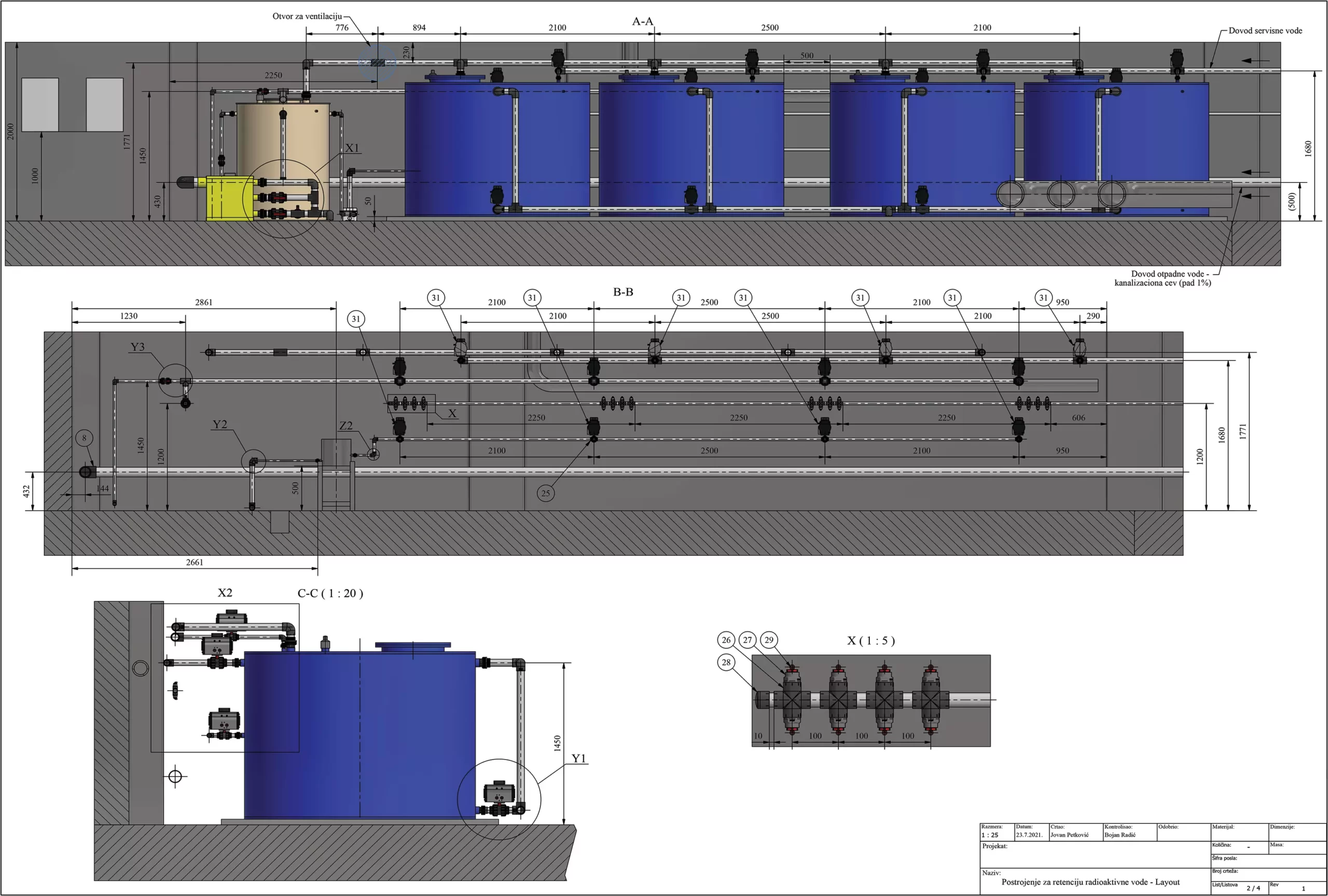Radioactive waste disposal plant
Plant description
Liquid radioactive waste storage plant is a system for storage and decomposition of organic waste liquid obtained from the use of radioactive substances (radioisotopes) used in diagnostics and therapy in medicine. Patients treated with radiopharmaceuticals are recommended to use controlled toilets. The goal of the system is to keep the produced radioactive liquid in the tanks and control it before it is discharged into the sewage network.
System description
- PA system of interconnected tanks
- PFully automated process control
- PFluid level control
- PAutomatic transfer, pumping of liquid from one tank to another
- PAutomatic pumping of liquid into the sewer after measuring the level of contamination in the liquid


Measurement of radioactivity
System characteristics
- PMonitoring control interface, 2 monochrome or color touch screens one in the control room one in the tank room
- PPipelines and valves: pipes are available as an option depending on the application for PN6 connection, radiation resistant ball valves with seals
- PStainless steel centrifugal pumps are used
- PPVC decay units (optional) from 1000l to 12000l
- PThe system works on the principle of automatic control (real-time control)
Advantages of the system
This plant provides absolute control of decay units, when one decay unit is filled, the other is automatically filled, the liquid in the other decay unit is controlled and during that time the first one is recharged and so the process takes place cyclically. The level of liquid in the tanks as well as the specific activity can be monitored in the control room on the touch screen. There is a possibility to use the control panel to send the liquid to the decomposition unit which is not automatically selected, in case of an accident the liquid is discharged (each tank is connected to the sewerage network), if there are several decomposition units it is possible to turn off one.


